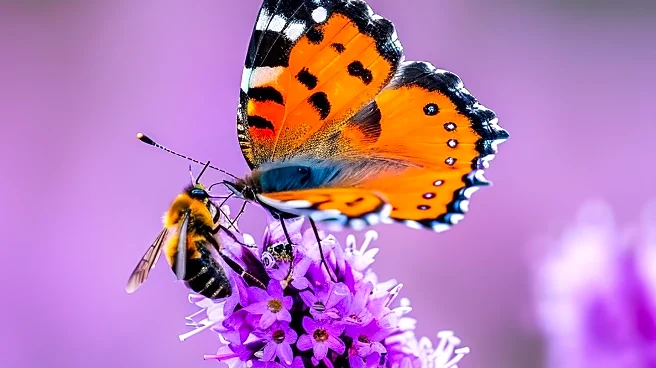What is the story about?
What's Happening?
In Illinois, there is a growing trend among gardeners to plant native species to support declining insect populations, including bees and butterflies. This movement is driven by concerns over the decrease in beneficial insects and the desire to create sustainable habitats. Native plants, such as milkweed for monarch butterflies, are being increasingly used in gardens and public spaces. The trend is reflected in the rising membership of native plant gardening groups and increased sales at local nurseries.
Why It's Important?
The surge in native plant gardening is crucial for biodiversity and the preservation of insect populations, which are vital for ecosystems. By planting native species, gardeners contribute to creating habitats that support insects and, consequently, the birds and other wildlife that depend on them. This grassroots movement empowers individuals to take actionable steps towards environmental conservation, potentially influencing broader ecological and policy changes.
What's Next?
As awareness grows, more gardeners and communities may adopt native planting practices, further expanding habitats for insects. This could lead to increased collaboration between gardeners, scientists, and policymakers to enhance conservation efforts. The movement may also inspire educational initiatives to inform the public about the benefits of native plants and their role in ecological health.
Beyond the Headlines
The shift towards native plants reflects a broader cultural change in how people perceive their role in environmental stewardship. It highlights the potential for individual actions to collectively impact ecological sustainability and biodiversity conservation.
AI Generated Content
Do you find this article useful?

